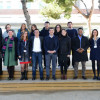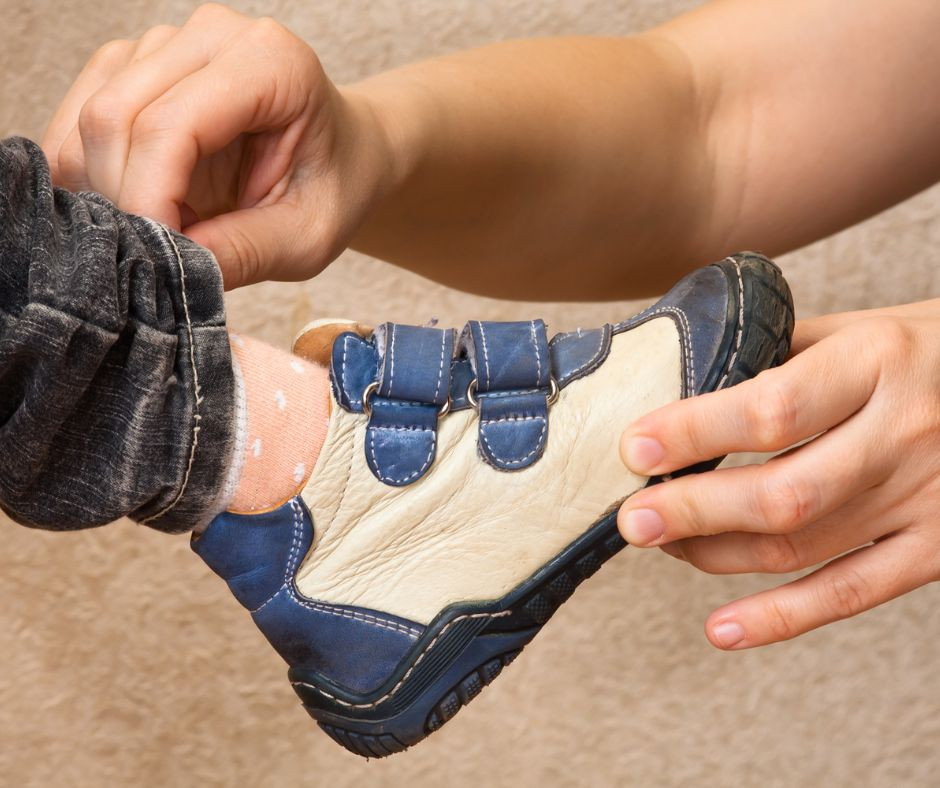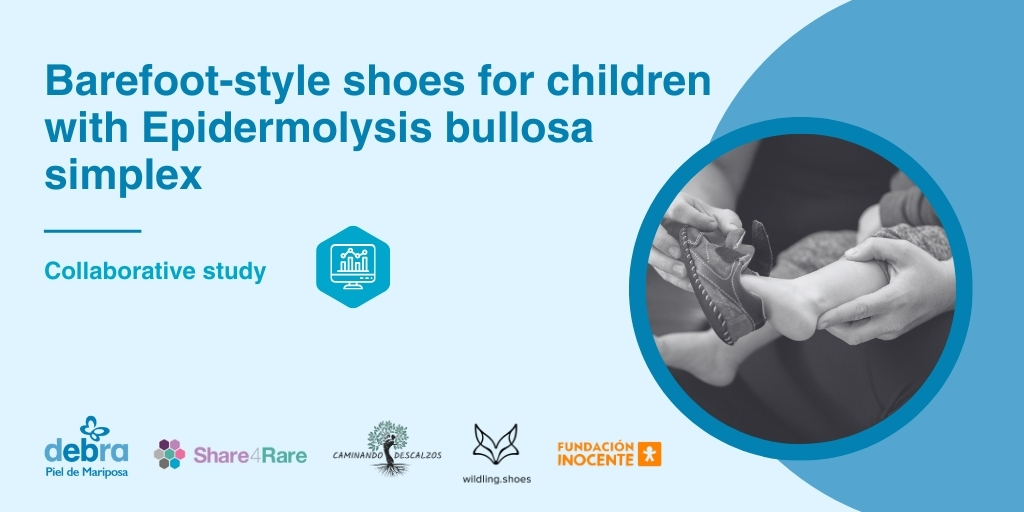
New study on Share4Rare: Barefoot-style shoes for children with Epidermolysis bullosa simplex

Epidermolysis bullosa (EB) is a group of rare genetic disorders characterised by extreme skin fragility and mucous membranes, leading to blisters and wounds. It is present from birth and currently has no cure. The only available treatment focuses on preventing complications and relieving symptoms, with special attention to skin care. The most common type is EB simplex (EBS), which is caused by defects in proteins found in the epidermis, the outermost layer of the skin.
A condition with a high impact on daily life
The pain and itching associated with EB have a significant effect on the quality of life of those affected, and the time required for wound care greatly limits the social interactions of these children.
In addition, being able to walk is a key motor milestone for people with EB. Only about a quarter of all children with EB are fully independent when it comes to walking due to pain and blistering.
Can barefoot shoes help improve EB symptoms?
There are currently some general recommendations about suitable footwear for people with EB, but it is difficult to find studies specifically focused on individuals with EBS that show whether this type of shoe truly meets their needs. On the other hand, several families living with EBS who have been using barefoot (also known as minimalist or respectful) footwear exclusively for the past six years have reported improvements in symptoms compared to others with EB who do not use this type of shoe.
In light of this, the DEBRA Butterfly Skin Association (DEBRA Spain) has decided to carry out a study on the use of barefoot shoes in children with EBS. The goal is to generate scientific evidence and offer clear recommendations for those affected by this condition.

Data collection on Share4Rare
The study will take place on the Share4Rare platform over two months: in the first month, participants will wear their usual footwear, and in the second month, they will use barefoot shoes. Through weekly questionnaires, participants will provide information about pain-free walking time, the number of blisters and foot lesions, and other general aspects of their quality of life. Additionally, they will submit weekly photos of their feet. The reported data will then be analysed, comparing the experience with both types of footwear to determine if any improvements are observed.
The people behind the study
Participants: A small group of children with Epidermolysis bullosa simplex whose families are members of DEBRA Butterfly Skin Association.
Led by: DEBRA Butterfly Skin Association.
Financial support: “Fundación Inocente, Inocente" through the 2024 Grants Program for children with rare diseases.
Research team:
Núria Tarrats: Research Lead at DEBRA Butterfly Skin Association.
Natividad Romero: Nurse and Coordinator of the Family Support Team at DEBRA Butterfly Skin Association.
Elena Perona: Nurse, Family Support Team at DEBRA Butterfly Skin Association.
Rocío Maseda: Dermatologist at La Paz University Hospital.
Collaboration:
Caminando Descalzos has provided expertise on barefoot footwear and logistical support and donated barefoot socks.
Wildling has donated the barefoot shoes used in the study.
